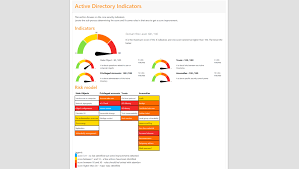The Importance of Active Directory Vulnerability Assessment
In today’s digital landscape, where cyber threats are constantly evolving, it is crucial for organisations to prioritise the security of their IT infrastructure. Active Directory, as a central component of many corporate networks, is a prime target for cyber attacks. Conducting regular vulnerability assessments on your Active Directory environment is essential to identify and mitigate potential security risks.
Understanding Active Directory Vulnerabilities
Active Directory vulnerabilities can arise from various sources, including misconfigurations, weak access controls, outdated software, and unpatched systems. These vulnerabilities can be exploited by malicious actors to gain unauthorised access to sensitive data, disrupt operations, or launch targeted attacks.
The Benefits of Vulnerability Assessment
By conducting regular vulnerability assessments on your Active Directory infrastructure, you can:
- Identify security weaknesses before they are exploited by attackers;
- Mitigate risks and strengthen your overall security posture;
- Ensure compliance with industry regulations and standards;
- Enhance incident response capabilities by proactively addressing vulnerabilities.
Best Practices for Active Directory Vulnerability Assessment
When performing a vulnerability assessment on your Active Directory environment, consider the following best practices:
- Schedule regular scans to detect new vulnerabilities;
- Implement secure configurations and access controls;
- Keep software and systems up-to-date with the latest patches;
- Evaluate user permissions and privilege levels regularly;
- Monitor and log activity within Active Directory for suspicious behaviour.
Conclusion
In conclusion, proactive vulnerability assessment is key to maintaining a secure and resilient Active Directory environment. By identifying and addressing vulnerabilities before they are exploited, organisations can safeguard their critical assets and minimise the impact of potential cyber threats. Remember that cybersecurity is an ongoing process, and staying vigilant against emerging risks is crucial in today’s threat landscape.
Tools for Risk Assessment in Active Directory: A Guide
Conducting a Security Assessment of Your Active Directory Environment
4. Self-Assessment for Active Directory: Best Practices and Procedures
- What is Active Directory vulnerability?
- What is the risk assessment tool in Active Directory?
- What is Active Directory Security Assessment?
- What is the self assessment of Active Directory?
What is Active Directory vulnerability?
An Active Directory vulnerability refers to a weakness or flaw within the Active Directory system that could be exploited by malicious actors to compromise the security of an organisation’s network. These vulnerabilities can stem from various sources such as misconfigurations, weak access controls, outdated software, or unpatched systems. Identifying and addressing Active Directory vulnerabilities through regular assessments is crucial in order to prevent potential cyber attacks, protect sensitive data, and maintain the integrity of the IT infrastructure.
What is the risk assessment tool in Active Directory?
The risk assessment tool in Active Directory is a crucial component used to evaluate and quantify potential security risks within the Active Directory environment. This tool helps organisations identify vulnerabilities, assess the likelihood of threats, and determine the potential impact of security incidents. By leveraging the risk assessment tool, administrators can prioritise remediation efforts, strengthen security controls, and enhance overall resilience against cyber threats. Conducting regular risk assessments using this tool is essential for maintaining a proactive approach to cybersecurity and ensuring the protection of critical IT assets within the Active Directory infrastructure.
What is Active Directory Security Assessment?
An Active Directory Security Assessment is a comprehensive evaluation process that aims to identify and address security vulnerabilities within an organisation’s Active Directory infrastructure. This assessment involves examining the configuration settings, access controls, user permissions, group policies, and overall security posture of the Active Directory environment. By conducting a thorough security assessment, organisations can proactively detect weaknesses, misconfigurations, or potential entry points that could be exploited by cyber attackers. The goal of an Active Directory Security Assessment is to enhance the overall security of the network, mitigate risks, and ensure compliance with industry regulations and best practices.
What is the self assessment of Active Directory?
The self-assessment of Active Directory refers to the process in which an organisation evaluates its own Active Directory environment for vulnerabilities and security risks. This involves conducting internal audits, reviewing configurations, and assessing access controls within the Active Directory infrastructure. By performing a self-assessment, organisations can proactively identify potential weaknesses, gaps in security protocols, or non-compliance with best practices. This self-evaluation empowers organisations to take corrective actions to enhance the overall security posture of their Active Directory environment and mitigate potential threats effectively.

